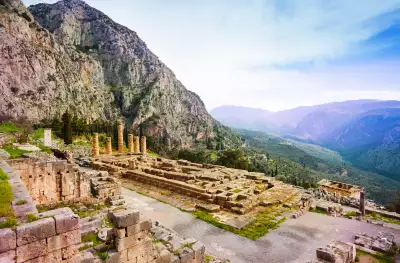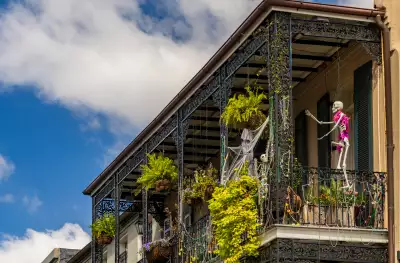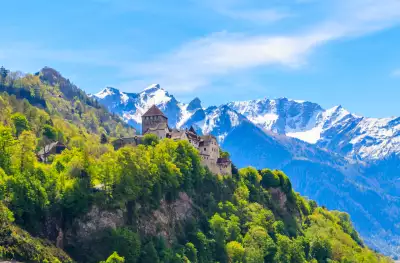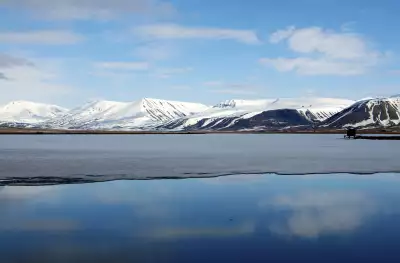Top Places to Visit in India
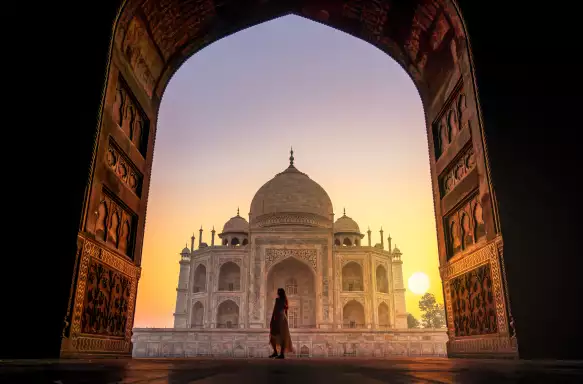
Each corner of India weaves a distinct thread into the rich tapestry of the nation’s culture and history.
From the bustling bazaars of Old and New Delhi to the rose-hued splendour of Jaipur’s Pink City, India is a land of striking contrasts. Yet, at the heart of every destination lies a shared sense of mystique and spiritual depth. One moment, you might be watching the sun rise behind the Taj Mahal, its golden light casting a warm glow over the marble façade; the next, you’re swept up in the joyous celebration of Diwali, as vibrant lights and colours transform the streets into a festival of life.
Wherever your journey takes you, India offers something unforgettable—and this guide showcases some of the most captivating places to explore.
Delhi
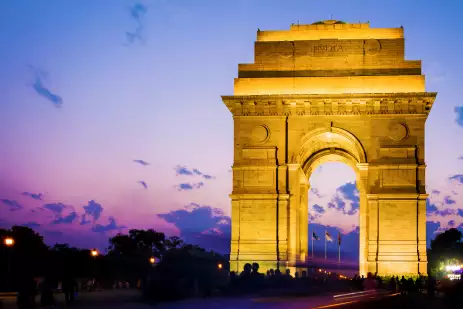
Delhi is a city of contrasts, where ancient history and modern life coexist in a vibrant, sometimes chaotic, but always fascinating way. As the capital of India, it’s a cultural and historical powerhouse, offering visitors a deep dive into the country’s rich past and dynamic present.
One of Delhi’s biggest draws is its wealth of historical landmarks. From the towering Qutub Minar and the majestic Red Fort to the serene Humayun’s Tomb and the iconic India Gate, the city is a treasure trove for history lovers. It also forms part of the famous Golden Triangle tourist route, alongside Agra and Jaipur, making it a key stop for cultural travellers.
For those who love architecture and spirituality, the Lotus Temple and the Swaminarayan Akshardham Temple offer peaceful retreats and stunning design.
Food is another highlight. Delhi’s street food scene is legendary, with bustling markets like Chandni Chowk and Lajpat Nagar serving up everything from spicy chaat to crispy samosas and sweet jalebis.
Beyond the sights and tastes, Delhi offers a full cultural immersion. Its streets are alive with colour, noise, and energy, with a unique charm that many travellers find unforgettable. Whether you’re shopping for bangles in Sarojini Nagar, celebrating Holi or Diwali, or dancing the night away in one of its many clubs, Delhi is a city that leaves a lasting impression. Even if you’re passing through, it’s well worth taking the time to explore.
Agra
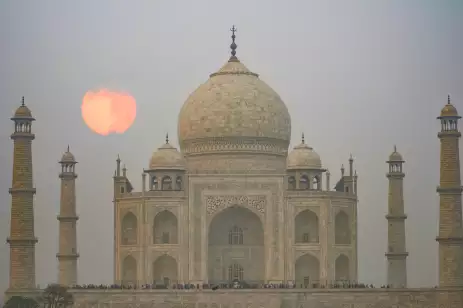
Agra, nestled in the northern Indian state of Uttar Pradesh, is a city steeped in history and cultural richness. Best known for the iconic Taj Mahal, Agra was once the capital of the Mughal Empire and still bears the architectural and artistic legacy of emperors like Akbar, Jahangir, and Shah Jahan. The Taj Mahal, a UNESCO World Heritage Site, stands as a symbol of love and Mughal craftsmanship, while other landmarks like the Agra Fort and Fatehpur Sikri showcase the fusion of Persian, Islamic, and Indian architectural styles that defined the era.
Beyond its monuments, Agra thrives as a centre for traditional arts and crafts. The city is renowned for its marble inlay work, known as Pietra Dura, which features semi-precious stones embedded in marble—a technique famously used in the Taj Mahal’s decoration. Agra also has a strong leather industry and is known for producing handcrafted shoes, bags, and accessories. Textile traditions are preserved through the creation of Pashmina shawls and silk sarees, reflecting the city’s artisanal heritage.
The city’s vibrant food markets offer snacks like chaat and golgappas, adding to its lively street culture. Festivals such as Diwali, Holi, and Eid are celebrated with enthusiasm, and the annual Taj Mahotsav showcases Agra’s cultural diversity through performances, crafts, and cuisine.
The people of Agra, known for their hospitality, contribute to the city’s inclusive atmosphere. Traditional attire, such as sarees and salwar kameez for women and kurta pyjama for men, reflects both Mughal and Indian influences. Agra is also a hub for performing arts, particularly Hindustani classical music and Kathak dance, with the Agra Gharana playing a key role in preserving musical traditions. While deeply rooted in history, Agra embraces modernity, creating a dynamic cultural synthesis that continues to evolve through its institutions, festivals, and everyday life.
Jaipur
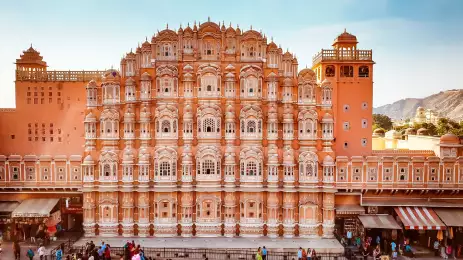
Jaipur, the capital of Rajasthan and famously known as the “Pink City,” is a vibrant blend of history, culture, and modernity. Founded in 1727 by Maharaja Sawai Jai Singh II, the city was meticulously planned using ancient Indian architectural principles, making it one of India’s earliest examples of urban planning. Its distinctive pink-hued buildings, introduced in 1876 to welcome the Prince of Wales, have since become a symbol of hospitality and charm.
The city is a treasure trove of architectural marvels and historical landmarks. Highlights include the Hawa Mahal, with its 953 intricately carved windows designed to let in cool breezes, and the majestic Amber Fort, which combines Hindu and Mughal styles. Jaipur is also home to UNESCO World Heritage Sites like Jantar Mantar—an 18th-century astronomical observatory—and the City Palace, a sprawling complex that reflects royal grandeur and cultural heritage.
Culturally, Jaipur is a dynamic hub where tradition meets innovation. Its festivals—such as Teej, Diwali, and the Jaipur Literature Festival—are celebrated with music, dance, and vibrant attire. The city is also renowned for its arts and crafts, particularly jewellery, textiles, and blue pottery. Local markets brim with handcrafted goods, while modern boutiques and educational institutions reflect the city’s evolving identity.
Jaipur’s cuisine is another highlight, offering a rich palette of Rajasthani flavours and street food such as Pyaaz Kachori and lassi from Lassiwala provide a taste of everyday life.
Whether exploring its historic forts or savouring its culinary delights, Jaipur offers a captivating experience that bridges the past and present.
Varanasi
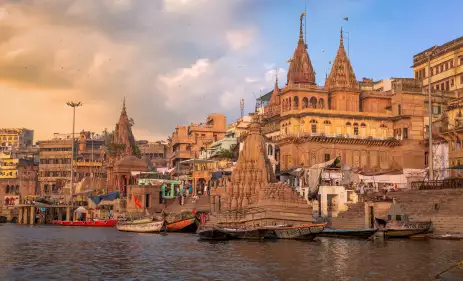
Varanasi, often referred to as the spiritual heart of India, is a city steeped in ancient tradition, vibrant rituals, and profound cultural significance. As the holiest city in Hinduism, it hosts a multitude of colourful festivals such as Holi and Diwali (Dev Deepavali), where the streets come alive with colour, light, and celebration. Other notable festivals include Ganga Mahotsav and Maha Shivratri, all of which offer a deep dive into India’s religious and cultural fabric.
The city’s iconic ghats—over 80 of them—line the sacred Ganges River and serve as places for ritual bathing, cremation, and spiritual reflection. These ghats are central to the belief that dying or being cremated in Varanasi leads to liberation from the cycle of rebirth. A boat ride along the ghats reveals a tapestry of sacred rituals and daily life, making it a moving and unforgettable experience.
Varanasi is also a haven for photographers and culture lovers. Its narrow alleys, vibrant street scenes, and meditative sadhus offer endless visual inspiration, especially at sunrise. The city is home to around 3,000 temples, including the revered Kashi Vishwanath Temple, earning it the nickname “City of Temples.” Its spiritual atmosphere is further enriched by the daily Ganga Aarti, a mesmerising fire ritual performed on the riverbanks that draws crowds of locals and visitors alike.
Culinary delights abound in Varanasi, from traditional dishes like kachori sabzi and tamatar chaat to the famous sweet lassi at the Blue Lassi Shop.
The city also hosts renowned music festivals such as the Mahindra Kabira Festival and Dhrupad Mela, celebrating India’s classical music heritage.
With its affordability, deep spiritual roots, and proximity to sacred sites like Sarnath, Varanasi offers a rich, immersive experience that resonates with both the soul and the senses.
Kerala
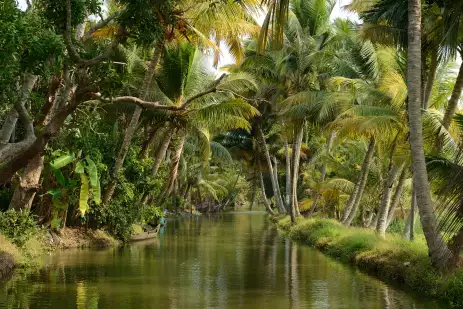
Kerala, often called “God’s Own Country,” is a lush, tropical paradise in southern India known for its serene backwaters, golden beaches, misty hill stations, and vibrant cultural traditions. Its unique geography—ranging from the Western Ghats to the Arabian Sea—makes it a haven for nature lovers and adventure seekers alike. Whether you're gliding through the tranquil backwaters on a houseboat in Alappuzha or trekking through the forests of Thekkady, Kerala offers a peaceful escape into nature’s embrace.
The state is a cultural treasure trove, home to classical art forms like Kathakali and Theyyam, and the ancient martial art of Kalaripayattu. Its architecture, from colonial-era buildings in Kannur to the majestic Padmanabha Swamy Temple in Thiruvananthapuram, reflects a rich blend of Dravidian and colonial influences. Festivals like Thrissur Pooram bring the streets alive with elephant parades, fireworks, and traditional music, offering a glimpse into Kerala’s spiritual and celebratory spirit.
Kerala’s culinary scene is equally unforgettable - known as the land of spices, it serves up a feast of flavours. From the elaborate vegetarian Sadya served on banana leaves to fresh seafood and sweet treats like payasam. Tea and coffee plantations in Munnar and Periyar add to the sensory experience, with scenic drives through fragrant estates and visits to tea museums.
Eco-tourism is thriving here, with guided trails through untouched forests and waterfalls like Dhoni Falls, offering a more sustainable way to explore. Rural Kerala, with its paddy fields, coconut groves, and traditional village life, provides an authentic and grounding experience.
Whether you're seeking relaxation, cultural immersion, or a spiritual journey, Kerala’s charm lies in its ability to offer it all.
Goa
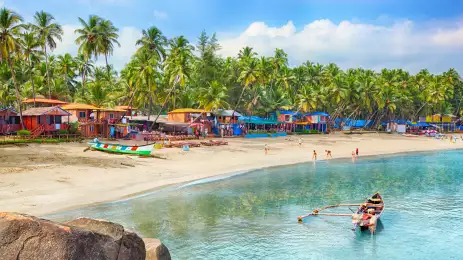
Goa, India’s smallest state, is a vibrant coastal gem that offers far more than just sun and sand. Often dubbed the “Ibiza of India,” it’s famous for its buzzing nightlife, beach parties, and laid-back vibe. But beyond the party scene, Goa is a multifaceted destination that caters to every kind of traveller—whether you're seeking adventure, tranquillity, culture, or cuisine. The local way of life, known as "susegad", embodies a relaxed, contented approach to living that’s infectious and deeply rooted in Goan culture.
The beaches are undoubtedly Goa’s biggest draw, ranging from the lively shores of Baga and Anjuna in the north to the serene sands of Palolem and Agonda in the south. Each beach has its own personality, offering everything from water sports and beach shacks to peaceful sunsets and yoga retreats.
Complementing the coastal charm is Goa’s rich culinary heritage, heavily influenced by its Portuguese past. Seafood lovers will be in heaven with dishes like fish curry rice, vindaloo, and bebinca, while the local cashew-based spirit, feni, adds a unique kick to the experience.
Goa’s charm extends inland too. The colourful flea markets, such as Anjuna and Arpora, are perfect for picking up spices, jewellery, and handcrafted souvenirs. Adventure seekers can dive into water sports, kayaking through mangroves, or even scuba diving with certified operators. For a cultural fix, the Portuguese-style architecture in Fontainhas and the grand old churches scattered across the state offer a glimpse into its colonial history. Don’t miss the vibrant Goa Carnival, a four-day celebration of music, dance, and colour that brings the streets alive.
From postcard-perfect roads lined with coconut palms to imposing forts like Chapora and Aguada that overlook the Arabian Sea, Goa is a feast for the senses. Whether you're cycling through quiet villages, spotting dolphins at sea, or simply soaking in the susegad lifestyle, Goa promises a memorable escape that blends relaxation, culture, and adventure in equal measure.

